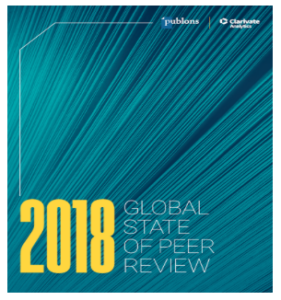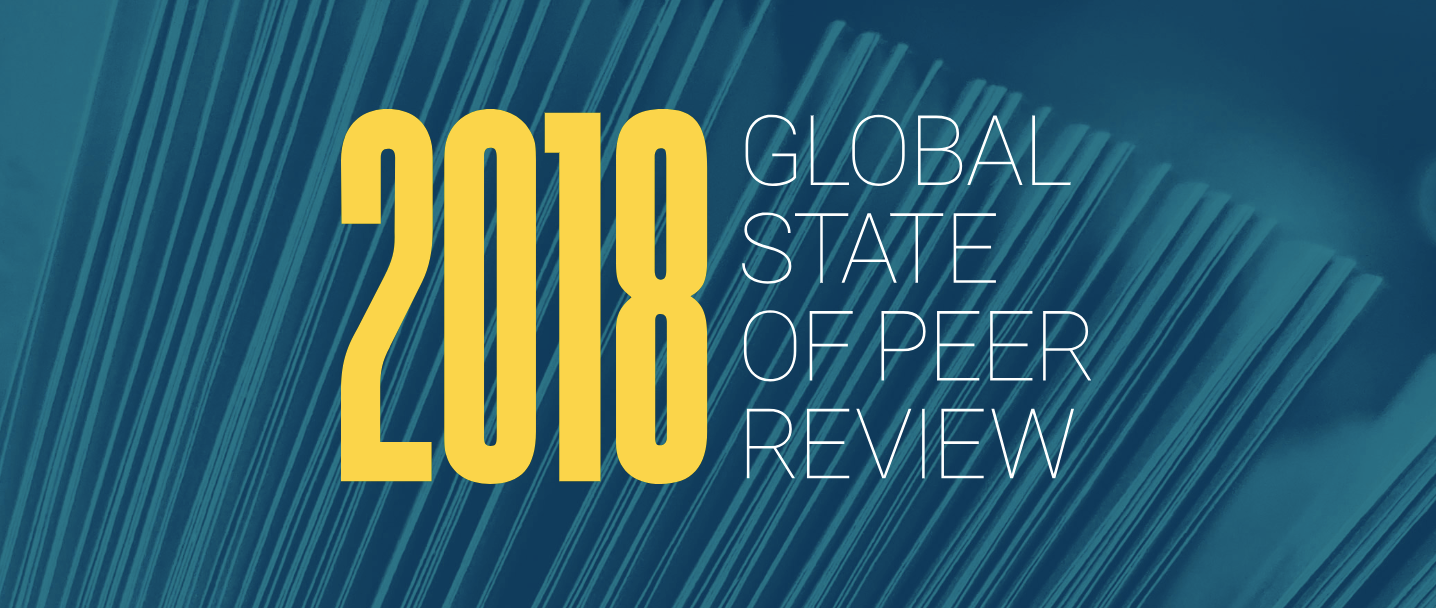Publons’ Global State of Peer Review 2018 is here! Far-reaching and pulling no punches, this largescale report assesses the lay of the research landscape to improve the future of peer review.
The inaugural report issues a call for collaborative industry action to improve the transparency, diversity, and efficiency of scholarly peer review (you can download it here).
In the second of our Publisher insight articles read on to discover the views of Wiley, SAGE, The British Institute of Radiology, and the Association of University Presses on the importance of collaboration and industry intervention addressing the key challenges in peer review right now.
Tami Potten, Editorial Development Manager, The British Institute of Radiology:

Industry-wide interventions are essential to ensure solutions that have an impact. Less reputable publishers and predatory journals are part of the challenge we face and centralised systems, such as the legitimate indexing sites and citations services help validate and authenticate the reputable and reliable journals, differentiating them from the predatory publications that researchers should avoid.
The centralised platform offered by Publons, which verifies an individual’s peer review efforts, is also an enormous help in the quest to identify legitimate and reliable expert reviewers.
There are definitely things we can and do undertake as a small independent society publisher to ensure our editors and reviewers feel supported and know that their role in the publication process is both vital and valued. Our integration with Publons is one such endeavour, as are the annual personalised certificates we send to all reviewers acknowledging their peer review input. We also offer online tools and resources to help guide and support them in their reviewing practices and publish an annual reviewer ‘thank you’ list in each of our journals.
Kristen Marchetti, Associate Director of Peer Review, SAGE:

As publishers we are one player in the broader scholarly communication community.
While we certainly play a role in addressing these issues, positive change is undoubtedly dependent upon a collaborative effort between multiple players within the scholarly communication ecosystem to ensure that everyone is doing their individual part to address these issues.
At SAGE, we are committed to ensuring that we adhere to the highest standards of peer review and publication ethics across the board. We have taken several steps towards addressing some of these issues by providing resources for SAGE authors, editors and reviewers, such as our Reviewer Gateway and Reviewer’s Guide which aim to support reviewers across all our journals.
Additionally we have partnered with COPE to provide our journal editorial office staff with access to the helpful resources which are included in their membership, provide guidance and information to our Editors via an Editor’s Handbook, and are always happy to consult with our Editors on an individual basis, as needed.
We have also taken an active role in supporting the recognition of the value of reviewers’ efforts by working with Publons, and earlier this year hosted a Peer Review Workshop in our UK office with partner organization Sense About Science.
Internally at SAGE we also have a global Peer Review team which is focused on supporting our authors, editors and reviewers as they navigate the peer review process, as well as a global Ethics & Quality committee that meets regularly to assess our practices and policies and ensure that we have a forum in which to discuss all aspects of the challenges and innovations in peer review.
Peter Berkery, Executive Director, Association of University Presses:

I think that the university press community has the resources to defend and articulate its own value proposition, yes – our commitment to editorial rigor is so widely recognized and respected. However, to the extent that we are citizens of a broader scholarly communications ecosystem, university presses have both a responsibility and a role to play in ensuring that system remains robust.
I could be reflecting the strong bias toward collaboration within my own community, but I tend to believe that systemic challenges can only be addressed through collective action.
Elizabeth Moylan, iPublisher, Research Integrity and Publishing Ethics, Wiley:

Certainly, when looking in depth at some of the opportunities and challenges for peer review collaboration with others is key. When conducting research on peer review, Wiley colleagues listened to the perspectives of researchers in their different roles i.e. authors, reviewers, editors, readers and the general public, not just the publisher viewpoint. There is also a fundamental need to work collaboratively with the research community at large including funders, institutions, societies, and broader initiatives (for example, PEERE).
Adopting initiatives that can help improve peer review, for example, reporting guidelines, data sharing initiatives, embracing more transparency in peer review, involving technology in the process, providing training and recognition for peer review – can only be effective working in collaboration.
Sometimes the toolkits and resources that can help address some of the concerns with peer review can be provided by publishers but also by partnering with other organizations. For example, Wiley provide tailored support and guidance for their peer reviewers but have introduced initiatives which help better peer review by working with others. For example, adopting initiatives which tackle bias in peer review with Registered Reports working alongside the Centre for Open Science, increased transparency in peer review in collaboration with Publons and piloted the use of AI tools in collaboration with Penelope.
Publons Global State of Peer Review Report
 What does the peer review landscape look like today? Is it getting better or worse? And who’s actually doing all the peer review, anyway? We made it part of our Peer Review Week mission to find out.
What does the peer review landscape look like today? Is it getting better or worse? And who’s actually doing all the peer review, anyway? We made it part of our Peer Review Week mission to find out.
- Publons’ Global State of peer review report combines:
- Rich and extensive data from Clarivate Analytic’s ScholarOne Manuscripts and Web of Science
- Data-driven analysis from Publons’ exclusive cross-publisher peer review platform
- Survey responses from ~12,000 researchers around the globe
- Statistics and insight to reveal the peer uncover the future direction of peer review.






